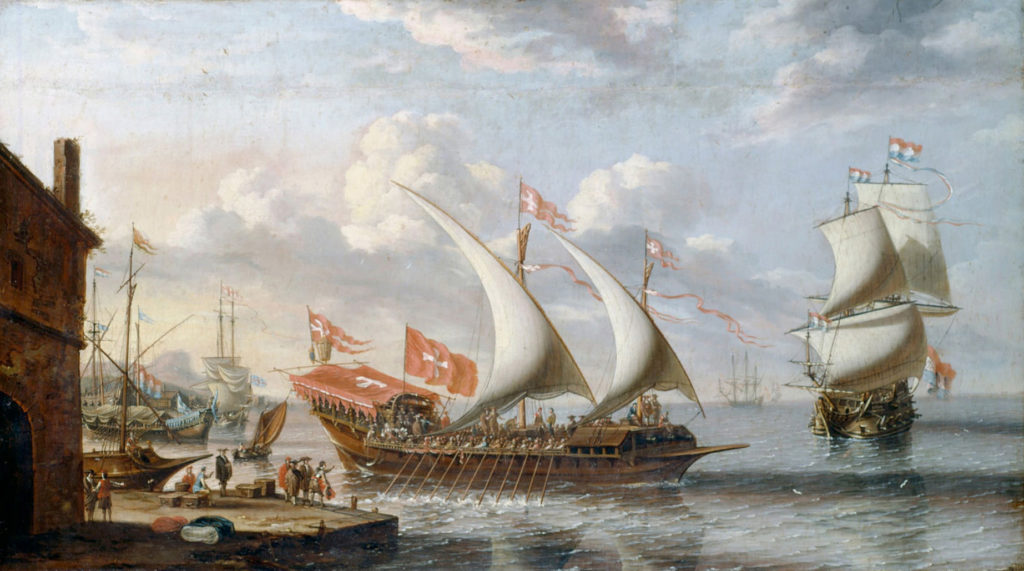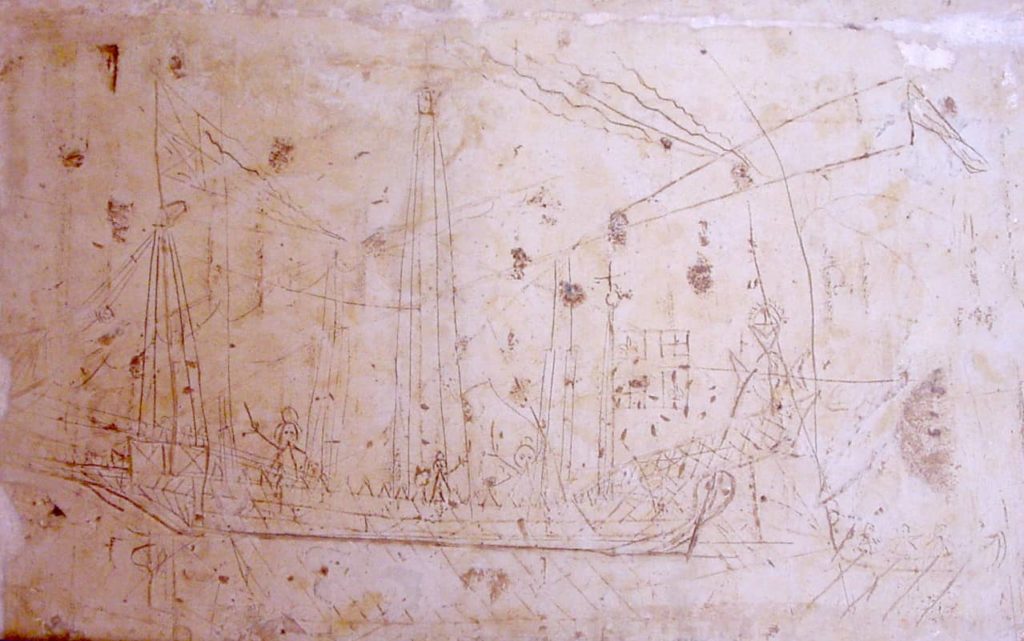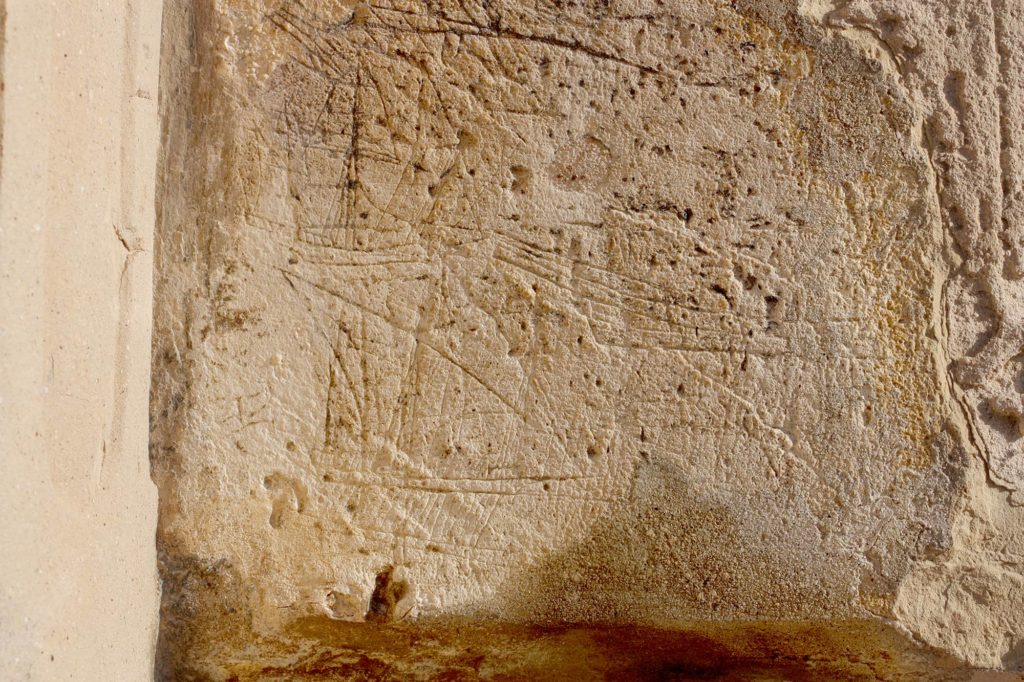Discover Malta's
maritime history
etched in stone
Why Ships?
Located in the Mediterranean, the Maltese archipelago is accessible by seafaring from mainland Europe and Africa, and before the arrival of aircraft, the sea was the only means of communication and transport with the outside world.

A Galley of Malta:
A painting by Lorenzo a Castro (c.1680) of a maritime scene featuring a galley.
Frejgatina:
A small, traditional Maltese boat used for pleasure or for carrying out work at sea (Parish church, Żurrieq).Ships are able to carry provisions, livestock, cargo or armaments. For those who work on the sea, seacraft form an integral part of their livelihood. To people living on land, ships signified economy, an influx of resources to an otherwise insular place, a returning loved one or even invasion.
To those who embark on journeys out at sea, the ship is their safety for the duration of the voyage, and the ship sustains the life of the crew and passengers until they return to land. For those people, the ship’s ability to navigate dangerous sea conditions and survive hostile attacks from other ships meant life or death.

Capitana:
A graffito of a Capitana and her crew, engaged in battle (Santu Rokku, Ħal-Balzan).
GMP Ships:
Multiple ship graffiti etched into one block of stone on the facade of the Grandmaster’s Palace, Valletta.It stands to reason that so many examples of ship graffiti are present in Malta and Gozo. The ship graffiti found vary in detail and accuracy. Researchers are sometimes able to discern among the different ship types depicted in the graffiti. Discover the Ship Types that feature in Malta and Gozo’s repertoire of ship graffiti.
